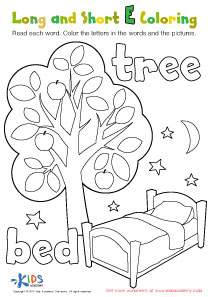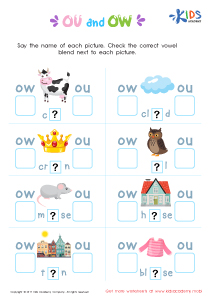Phonics Skills Vowel Diphthongs Worksheets for Ages 6-8
10 filtered results
-
From - To
Enhance your child's reading skills with our engaging Phonics Skills Vowel Diphthongs Worksheets designed for ages 6-8. These worksheets, available on Kids Academy, focus on teaching essential vowel diphthongs in a fun and interactive way. Children will master sounds like "oi," "oy," "ou," and "ow" through diverse activities, strengthening their phonics foundation. Perfect for both classroom and home use, these resources support literacy development, improve pronunciation, and build confidence in young readers. Start your child's phonics journey today with our expertly crafted vowel diphthongs worksheets! Download now for all-in-one accessible learning.
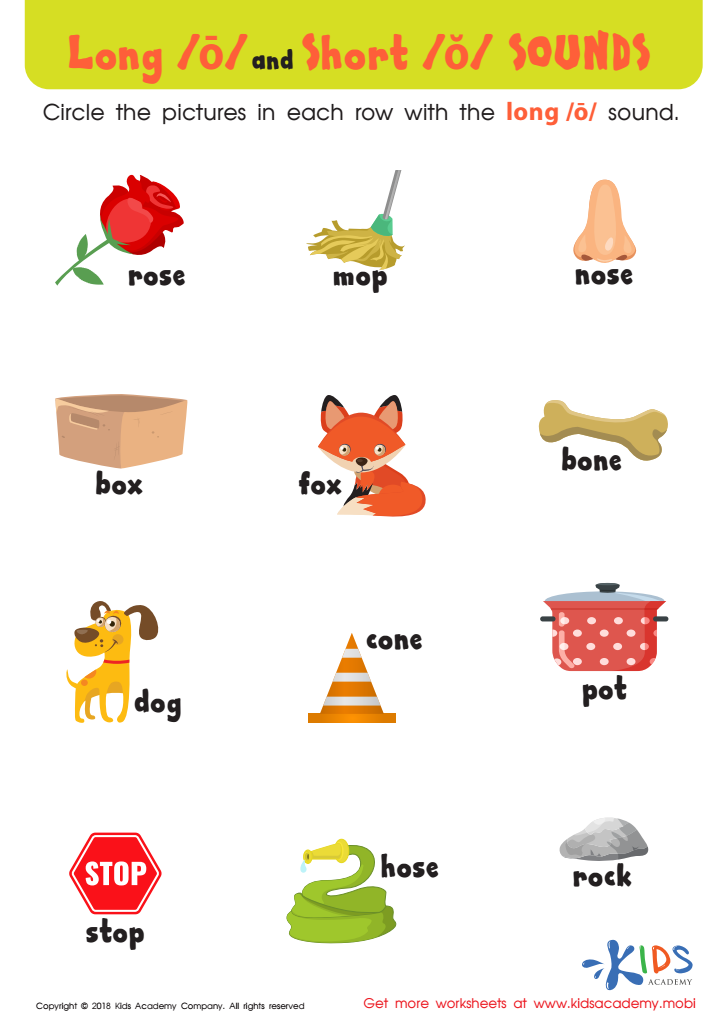

Reading: Long O and Short O Sounds Worksheet
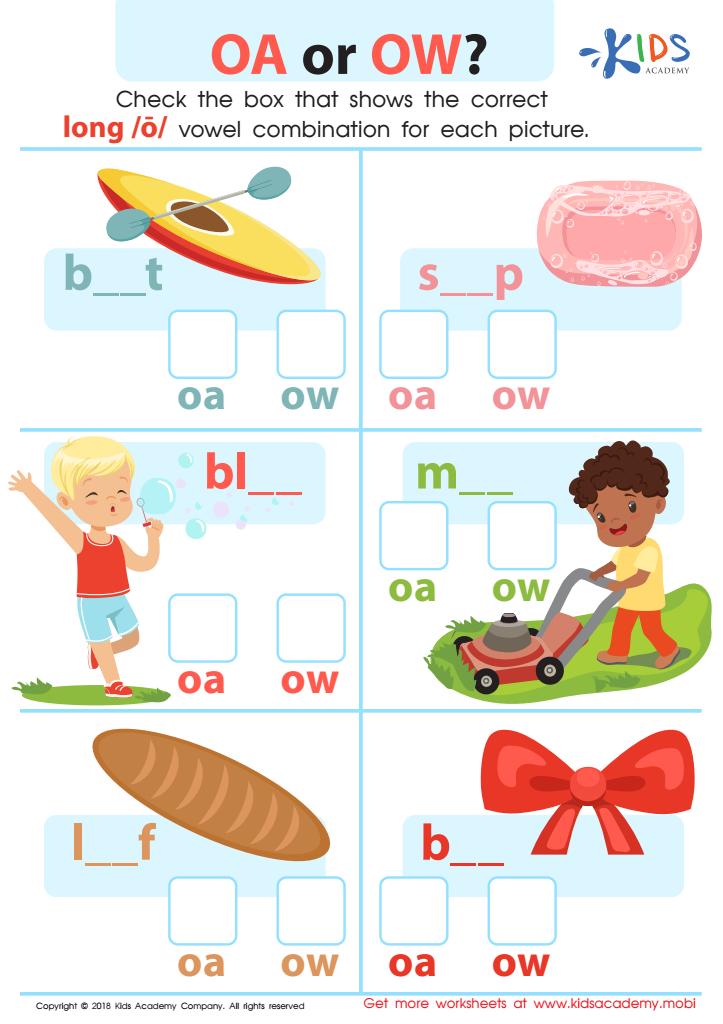

Reading: OA or OW Worksheet
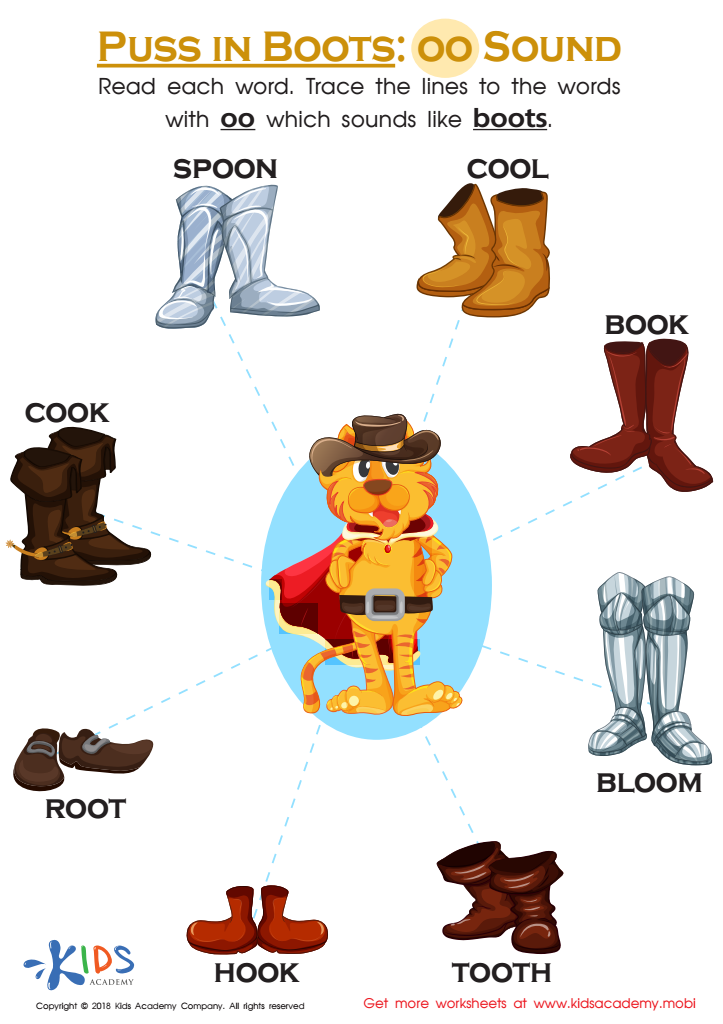

Puss in Boots: OO Sound Worksheet
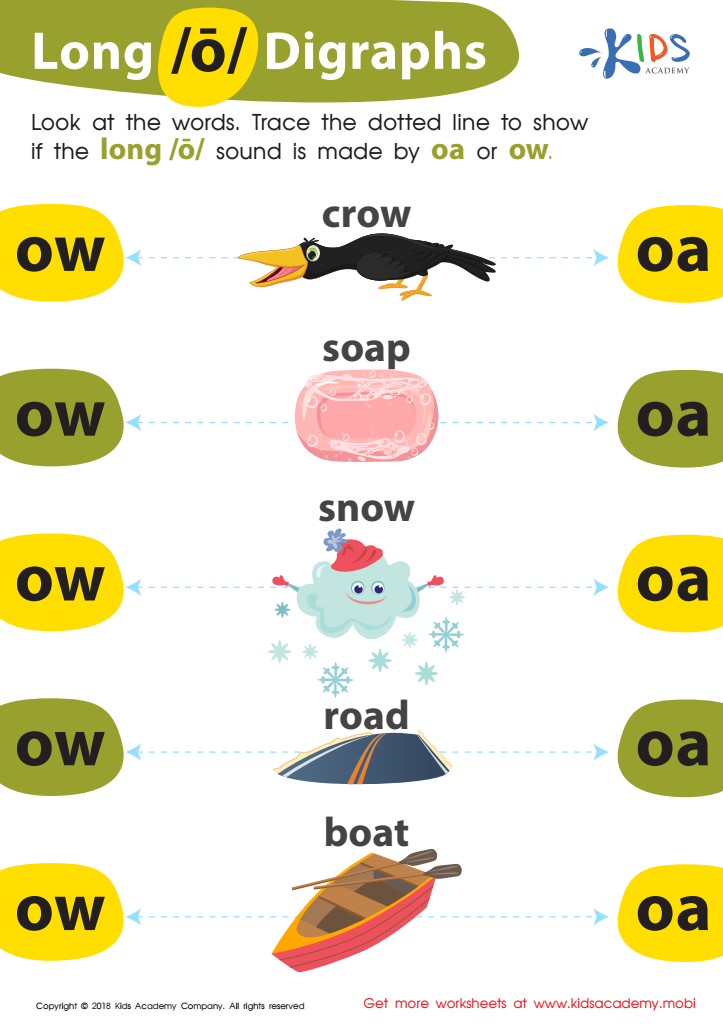

Reading: Long O Digraphs Worksheet
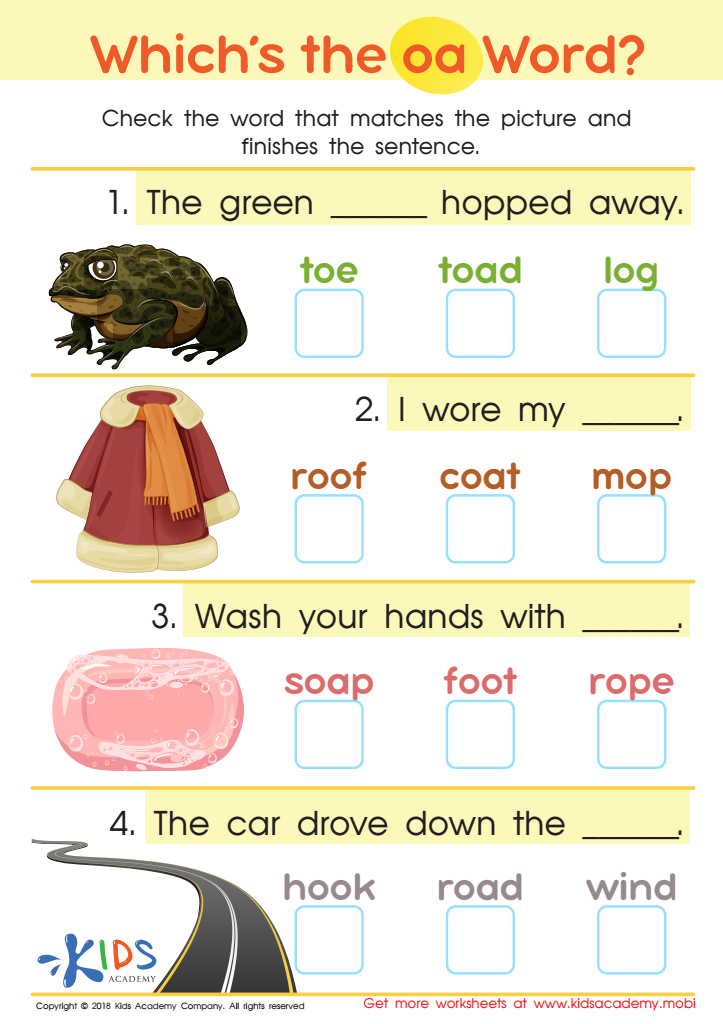

Which's the OA Word? Worksheet
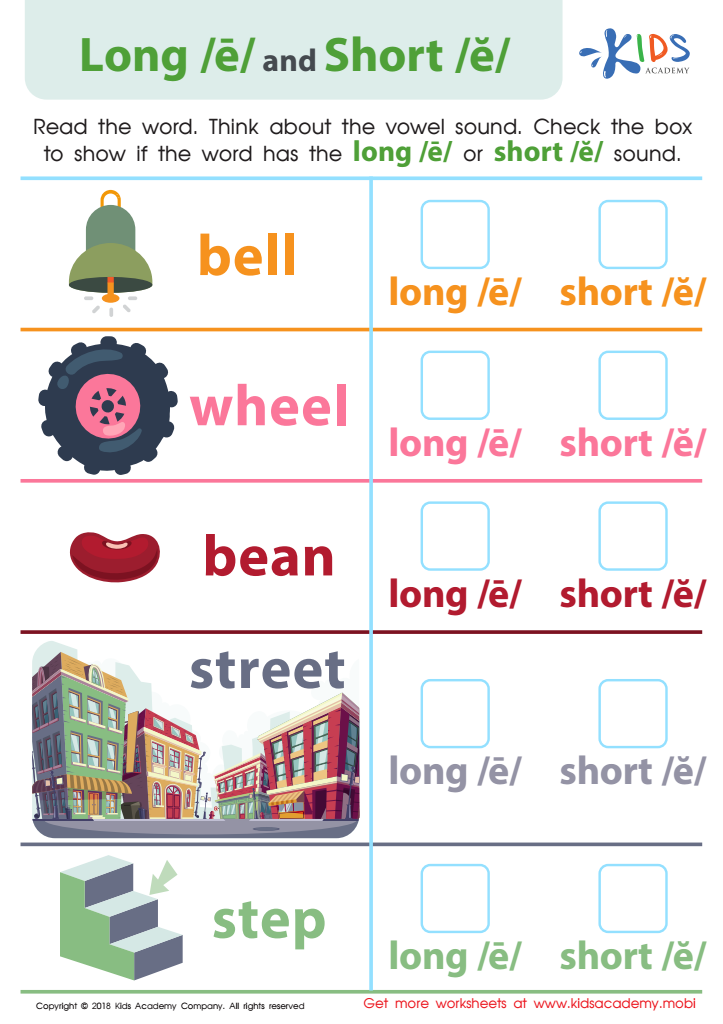

Reading: Long E and Short E Worksheet
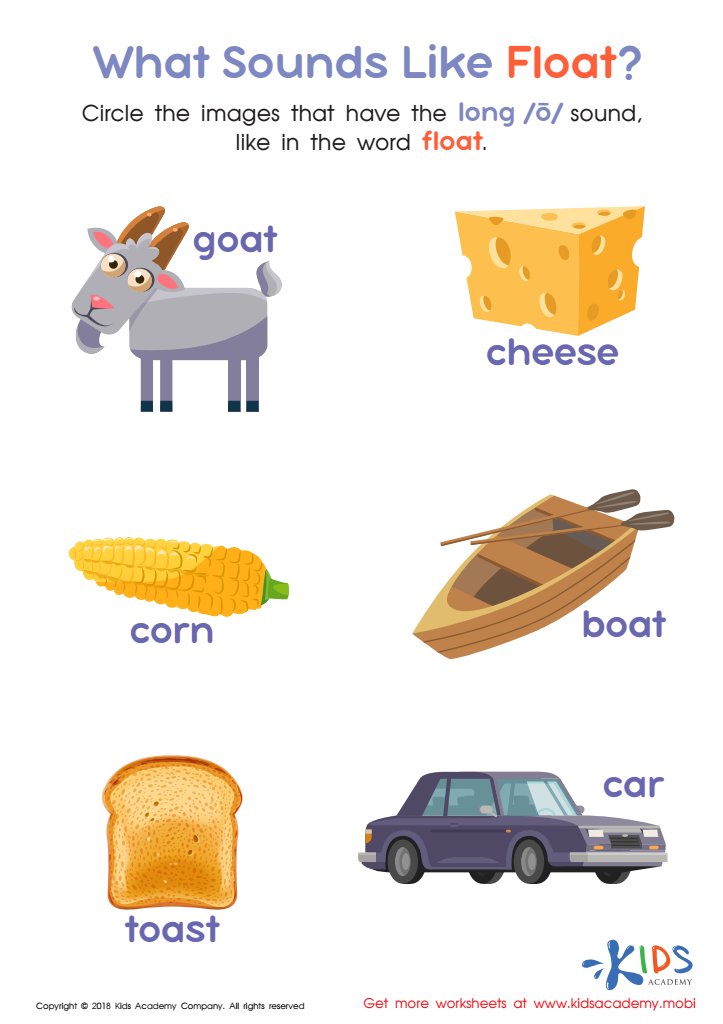

What Sounds Like Float? Worksheet
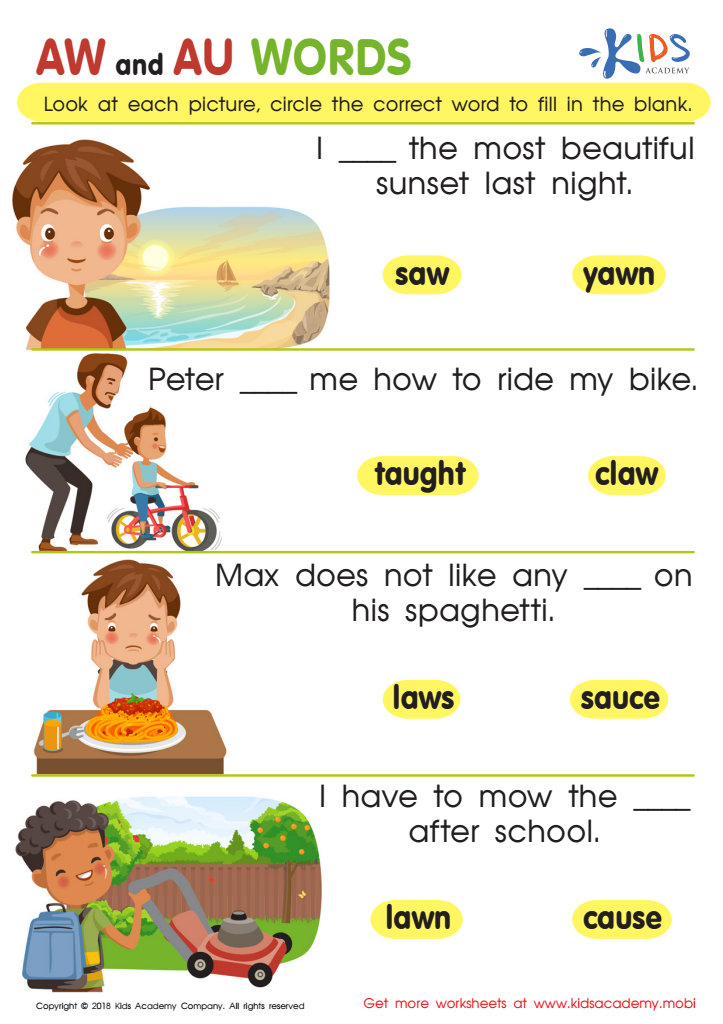

Reading: AW and AU Words Worksheet
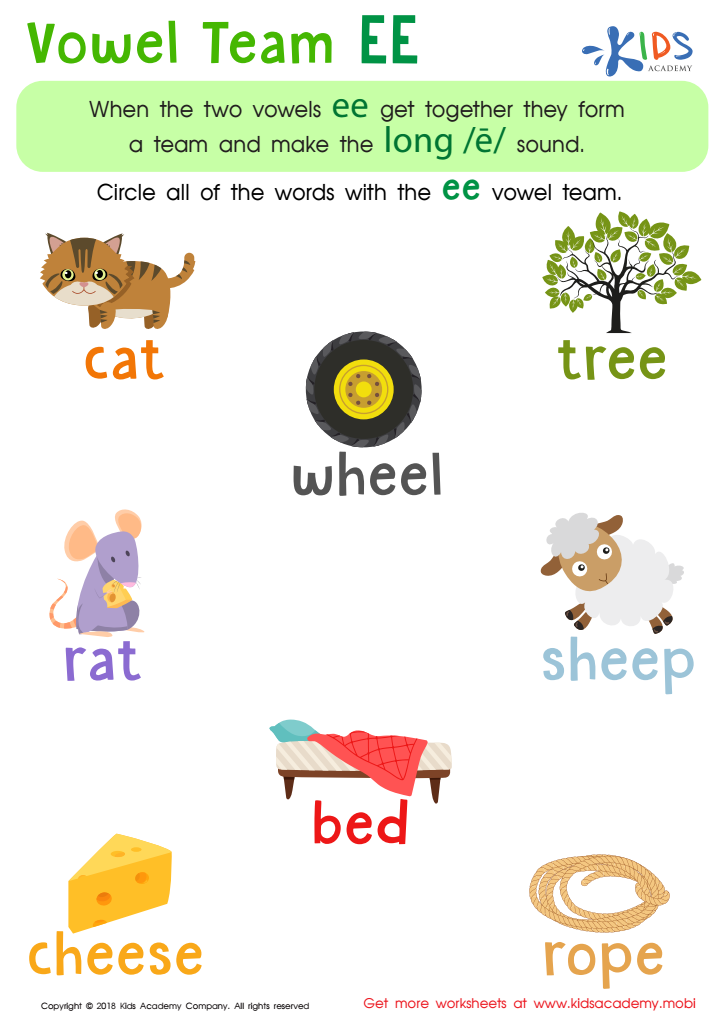

Reading: Vowel Team EE Worksheet
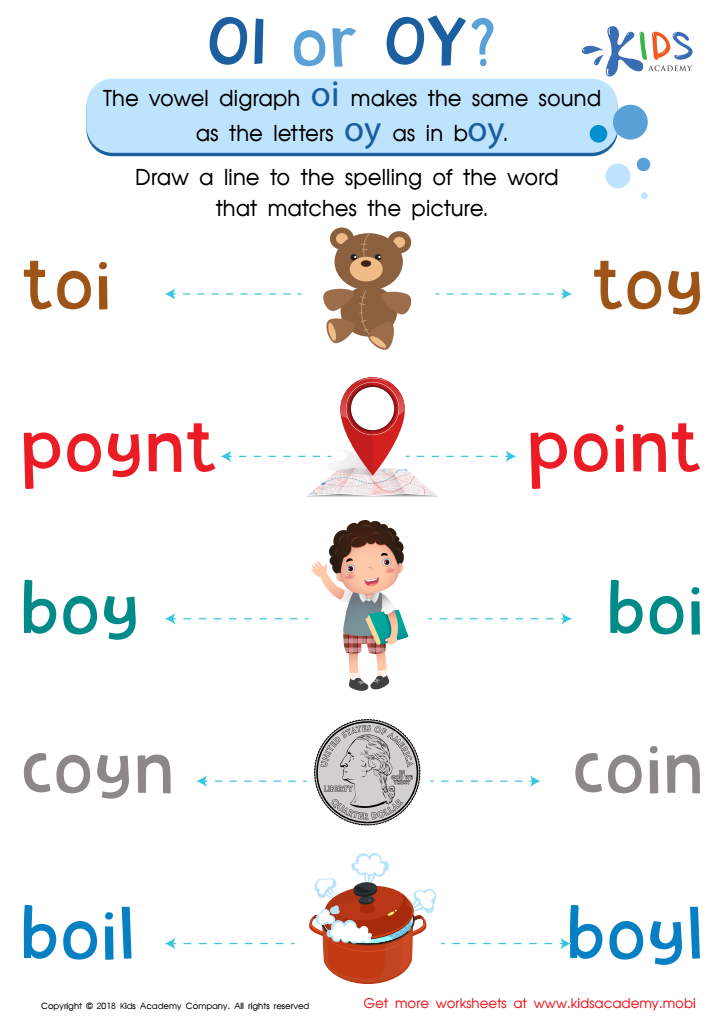

Reading: OI and OY Worksheet
Phonics skills, specifically vowel diphthongs, are crucial for children aged 6-8 as they build the foundation for proficient reading and writing. Vowel diphthongs are combinations of two vowel sounds within a single syllable, creating a gliding sound, such as "oi" in "boil" or "ou" in "out." Mastery of these sounds is essential because English is a language with numerous exceptions and irregularities, and understanding diphthongs helps children decode and pronounce many common but challenging words.
For parents and teachers, fostering these skills enriches a child's literacy development. Fluent reading not only supports academic success across all subjects but also enlivens a child’s imagination and fosters a lifelong love of learning. Young learners who are confident readers often exhibit greater self-esteem and better communication skills. Phonics instruction that includes vowel diphthongs enables children to become independent readers more quickly because they learn consistent rules and patterns.
Additionally, early intervention in phonics can prevent future reading difficulties. By paying attention to this critical aspect of language at an early age, educators and parents equip children with the tools necessary for accurate spelling, reading comprehension, and efficient information processing. Hence, prioritizing phonics, particularly vowel diphthongs, prepares children for both academic achievement and daily communication.

 Assign to My Students
Assign to My Students









